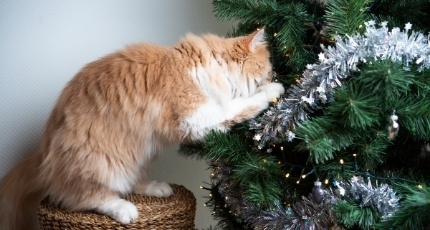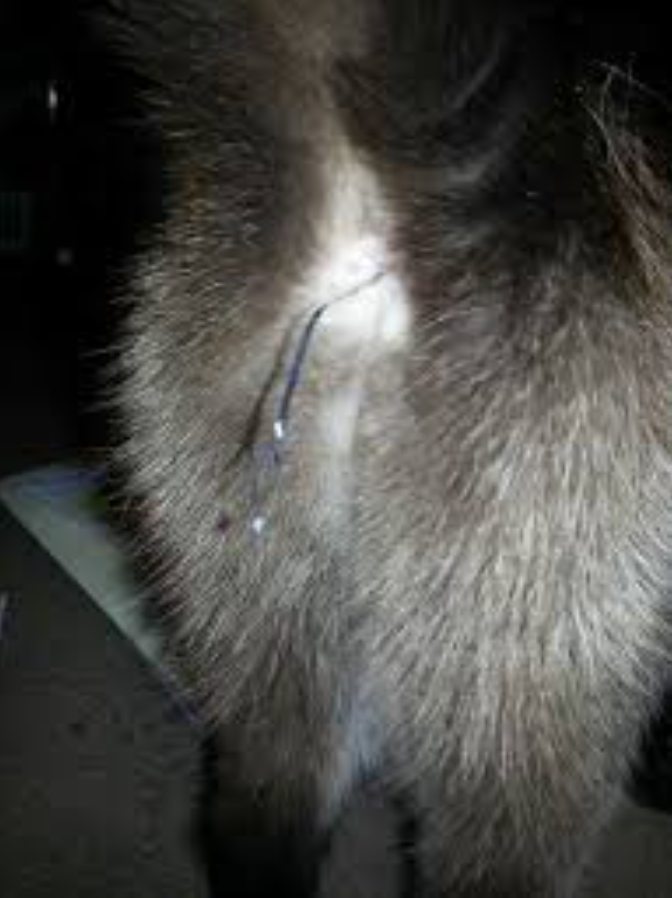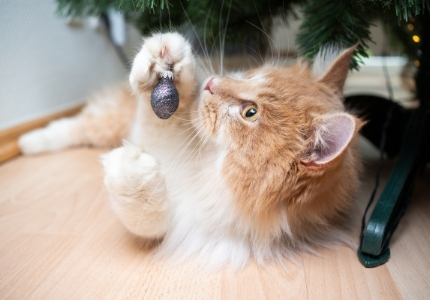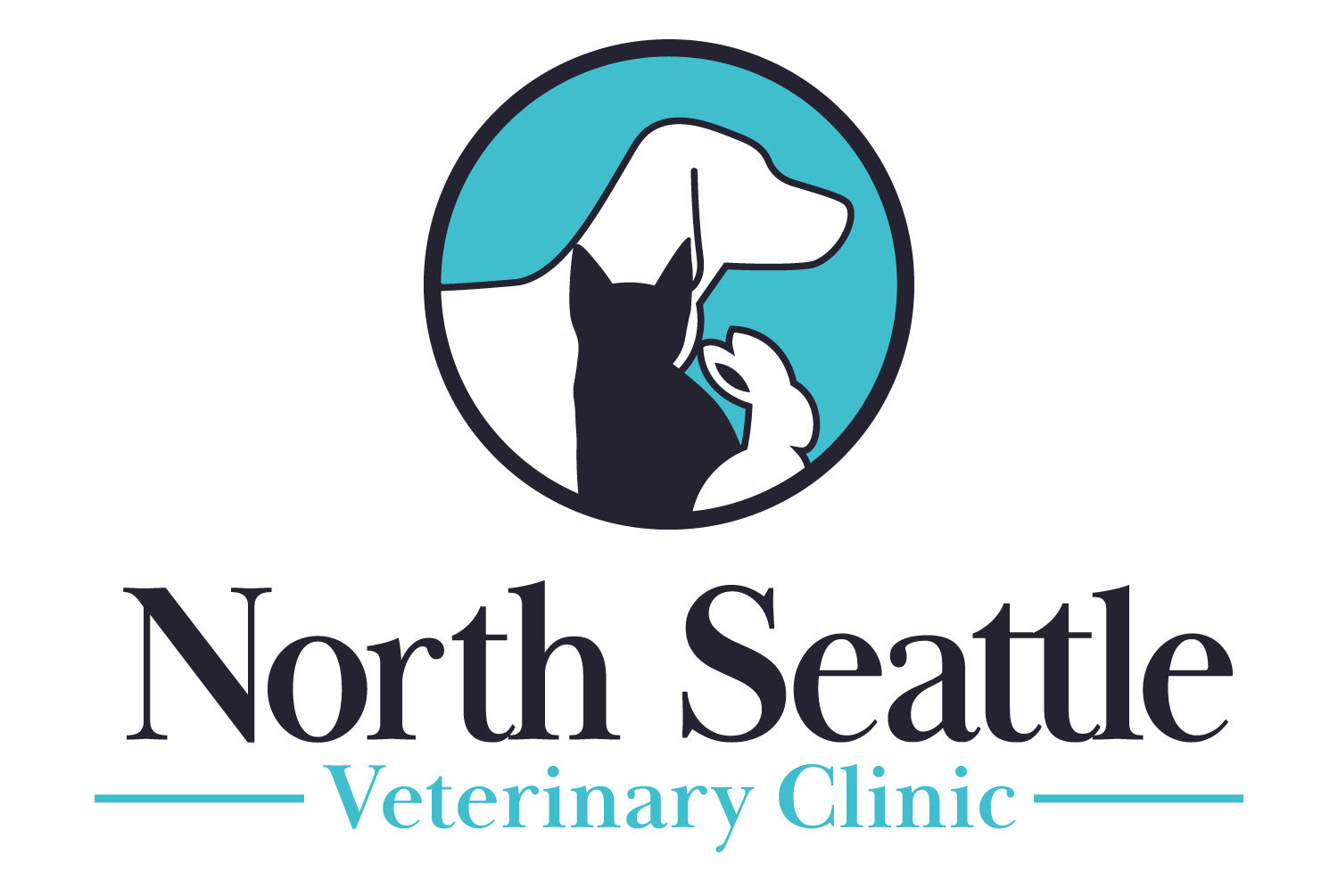What do you get when you eat Christmas decorations? Tinselitis!
(Pause for laughter)

Alright, that was a bad joke, but Christmas decorations can be dangerous for our pets – especially cats. Glass ornaments, strings of lights, and yes, tinsel, are all beautiful and shiny… and irresistible to our feline friends. We’ve all seen the heartwarming pictures of cats wrapped in Christmas lights or sleeping peacefully under the tree, but not all cats are so respectful of our carefully curated Christmas scenes. And yes, the videos of cats leaping away from falling trees, victorious that they’ve defeated their foes, are funny, but a Christmas Eve trip to the ER is no laughing matter.
It’s not just tinsel – ribbon and wrapping paper can be hazardous, too. Don’t let your cat play with or eat ribbons from your beautifully wrapped presents, and while playing with discarded wrapping paper is okay, take it away if you see your cat start to eat it.
What about ornaments? And the tree itself? Some cats just can’t help themselves – they just have to whack those shiny, dangly temptations! Don’t hang anything breakable or made of glass toward the bottom of the tree. Don’t allow your cat to climb the tree. Yes, it’s adorable, but danger outweighs a cute photo op. If your cat is persistent, then you may need to forego ornaments, or only put up ornaments that can take a whack or a bite. You may need to surround your tree with a baby gate.


Have a safe and happy holiday season, from all of us at NSVC to all of you! And for more information on how to keep all four-legged members of your family safe this time of year, check in with your local veterinarian or online with the American Veterinary Medical Association‘s recommended holiday safety guidelines.
